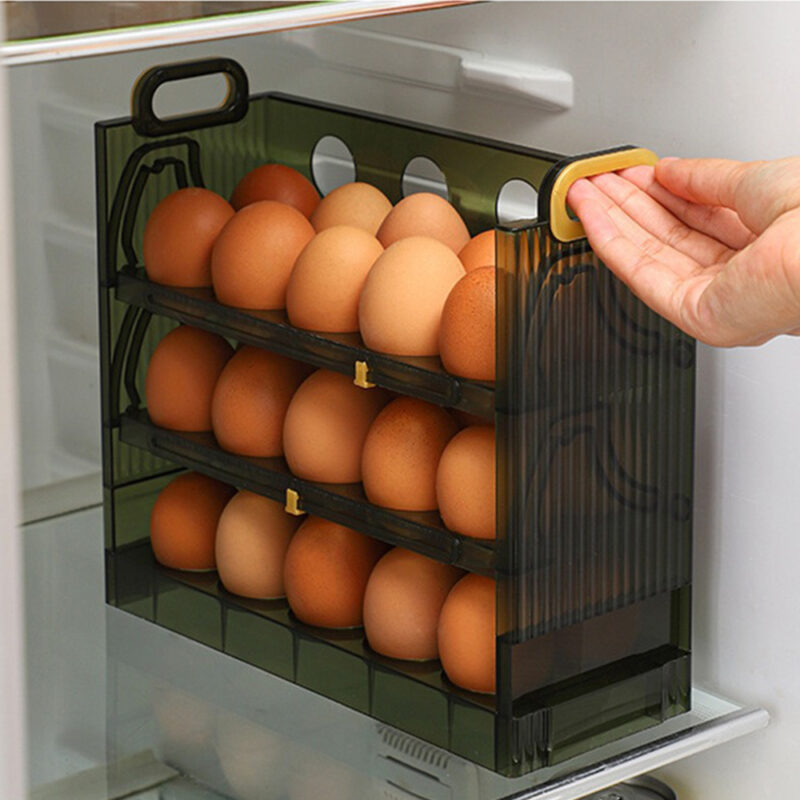Egg Storage
Revolutionizing Modern Products
In the realms of architecture, fashion, electronics, and even food, the concept of double-layering has emerged as a groundbreaking design approach. This technique not only enhances the aesthetic appeal of products but also significantly boosts their functionality and efficiency. In this comprehensive exploration, we delve into how double-layer design is applied across various industries, its benefits, challenges, and the future potential it holds.
Understanding Double-Layer Design
Double-layer design involves the use of two separate layers that function together to enhance the performance or aesthetics of a product. In architecture, it might refer to double-skinned facades which improve energy efficiency; in clothing, it pertains to garments that provide added insulation or protection; in electronics, it could involve layers that protect components while enhancing user interaction.
Double-Layer in Architecture
In architecture, the double-layer design is often embodied in the façade of buildings. These constructions feature two distinct layers — an outer layer that withstands environmental elements and an inner layer that contributes to effective energy management. Such designs are not just visually striking but also offer enhanced control over indoor climate, reducing the need for artificial heating and cooling. Notable examples include the BMW Welt in Munich and the KfW Westarkade in Frankfurt, both of which showcase how double-layer facades can lead to significant energy savings while offering dynamic visual appeal.
Double-Layer in Fashion
In the fashion industry, double-layering has taken a dual approach: aesthetic and functional. For instance, double-layered clothing often features an outer decorative layer coupled with an inner layer designed for comfort and moisture management. This is particularly evident in activewear, where such designs help athletes maintain optimal body temperature while providing freedom of movement. Additionally, high-fashion designers employ double-layer techniques to create complex, textured looks that add depth and intrigue to their garments.
Double-Layer in Electronics
In electronics, double-layer design plays a critical role in enhancing the durability and functionality of devices. Smartphones, for example, often use double-layered screens that not only protect the inner components but also offer improved touch sensitivity and display quality. The development of double-layer PCBs (Printed Circuit Boards) allows for more compact devices while ensuring better connection stability and electrical performance, crucial for the reliability of modern gadgets.
Double-Layer in Food Industry
The concept of double-layering extends even to the food industry, where it is used to enhance both the presentation and the sensory experience of dishes. A simple example is a double-layered cake, where different flavors complement each other, offering a complex taste profile. More innovatively, chefs use techniques like double-layered emulsions and encapsulations to surprise diners with bursts of flavor and texture that enhance the culinary experience.
Benefits of Double-Layer Design
The benefits of double-layer design are manifold:
- Enhanced Durability and Protection: By using two layers, products can offer better protection against environmental factors and wear and tear.
- Improved Efficiency: In buildings and machinery, double-layering can lead to better insulation and energy efficiency.
- Aesthetic Appeal: Double-layering often results in products that are visually more interesting and dynamic.
- Innovation in Functionality: Offers creative solutions to traditional design challenges, enabling new functionalities.
 Challenges and Considerations
Challenges and Considerations
While double-layer design offers numerous advantages, it also comes with its set of challenges:
- Cost Implications: Often, double-layering requires more material and more complex manufacturing processes, which can drive up costs.
- Design Complexity: Managing two independent layers that must function as a coherent whole requires sophisticated design and engineering.
- Maintenance Issues: In some cases, double-layered products may be harder to repair or maintain due to their complex structure.
The Future of Double-Layer Design
As technology advances and more materials become available, the potential for innovative double-layer designs grows. In architecture, evolving materials and construction techniques may allow for even more energy-efficient and self-sustaining buildings. In fashion, new fabrics could lead to garments that adjust their insulation properties based on environmental conditions. In electronics, further miniaturization might be achieved as engineers find ways to integrate more functionality into multi-layered components.
Conclusion
Double-layer design is a fascinating area of development that holds promise across multiple disciplines. From making buildings more energy-efficient to creating clothes that adjust to the weather, to packing more functionality into smaller devices, the potential is enormous. As designers and engineers continue to push the boundaries of what double-layer designs can achieve, we can expect to see even more innovative applications that blend aesthetics, functionality, and sustainability seamlessly.


